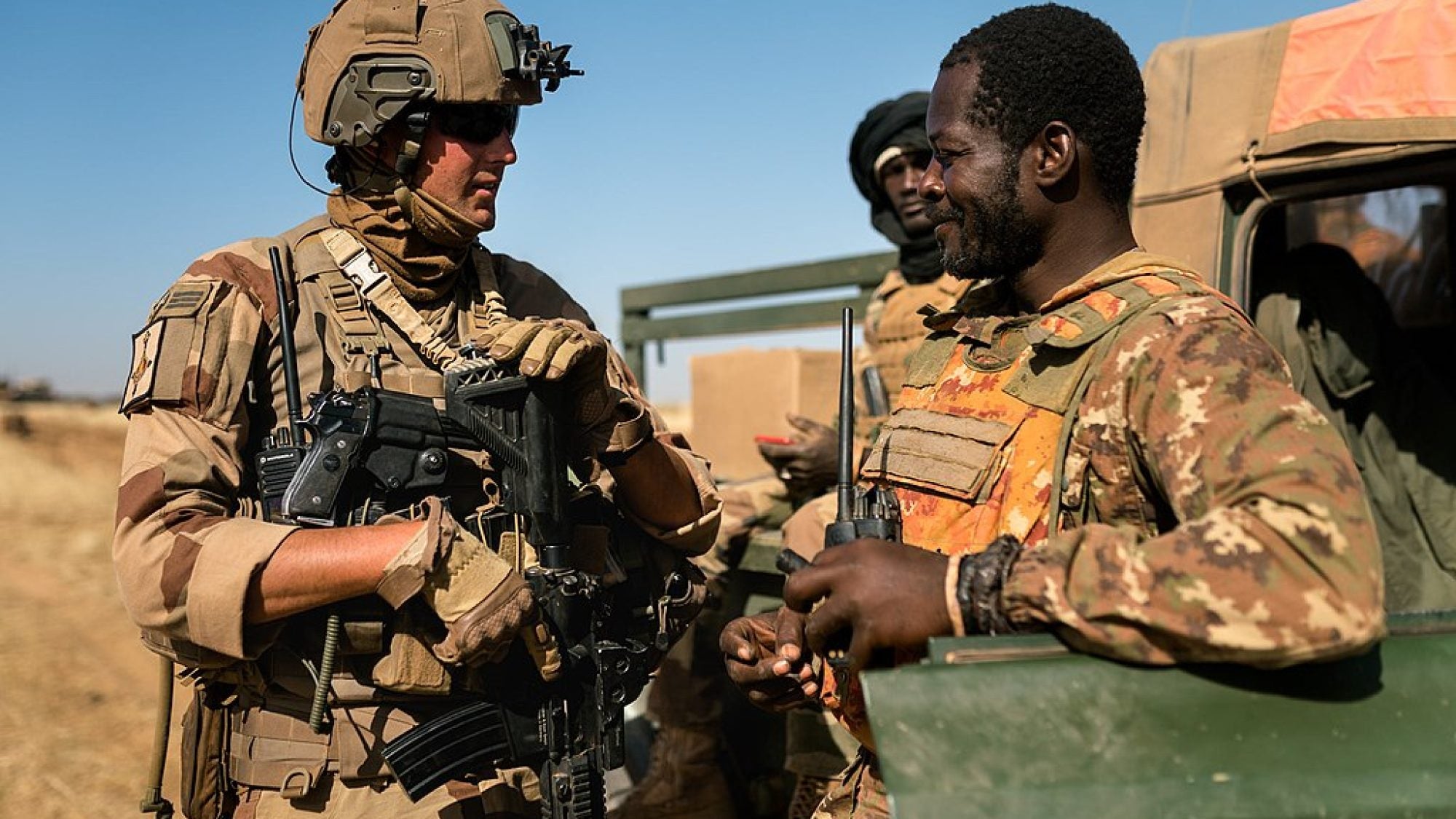Finally, the situation in Mali was rotten enough for international intervention. First because the mujahideen of Ansar Dine, the Movement for Tawhid and Jihad in West Africa (MUJWA), along with Al-Qaeda in the Islamic Maghreb (AQIM), only had to exercise a little pressure at the front in Konna, to let the last remnants of the Malian Army fall apart.1 Second because the Malian Interim President, Dioncounda Traoré, installed after the coup d’état against President Amadou Toumani Touré of 22 March 2012, faced yet another coup d’état from this same decrepit army, set heavily against foreign intervention as it might upset its power within Mali, which led him to formally ask France for military support, believing he had nothing to lose.2
Undoubtedly, the French Ministry of Defense and French Military HQ État-Major des Armées had a plan ready despite President Hollande’s public assurances that France would not pursue a neocolonial intervention in a sovereign state. France has historically intervened militarily in West Africa whenever the situation allowed.3 In the past decade, Mali had become more and more part of the U.S. sphere of influence in Africa as U.S. armed forces trained Malian troops in counter terrorism operations. This was without much success, as is now clear, but France must have looked with disquiet upon their loss of influence. Then there are the uranium mines at Imouraren in neighboring Niger, only a few hundred kilometers from the mujahideen controlled zone in Mali. A further degradation of the security situation in Mali would certainly pose a threat to these French strategic interests… (purchase article…)
Dr. Baz Lecocq holds a PhD in social sciences from the University of Amsterdam. Dr. Lecocq specializes in the history of Africa and the Muslim World. Dr. Lecocq is senior lecturer in African History at Ghent University, Belgium
Image Credit: Éric B./French Army, Licence Ouverte, via Wikimedia Commons
This is an archived article. While every effort is made to conserve hyperlinks and information, GJIA’s archived content sources online content between 2011 – 2019 which may no longer be accessible or correct.

